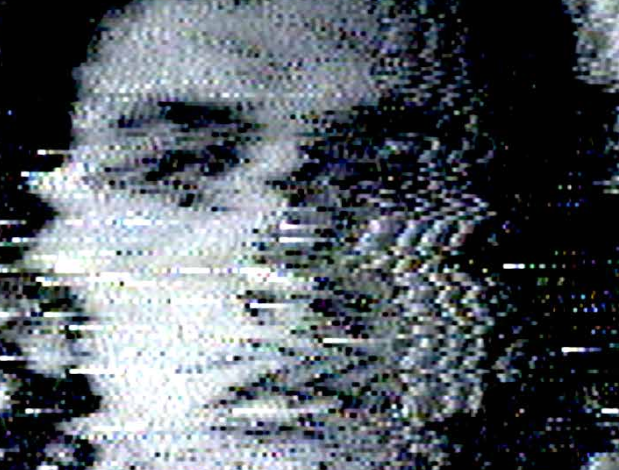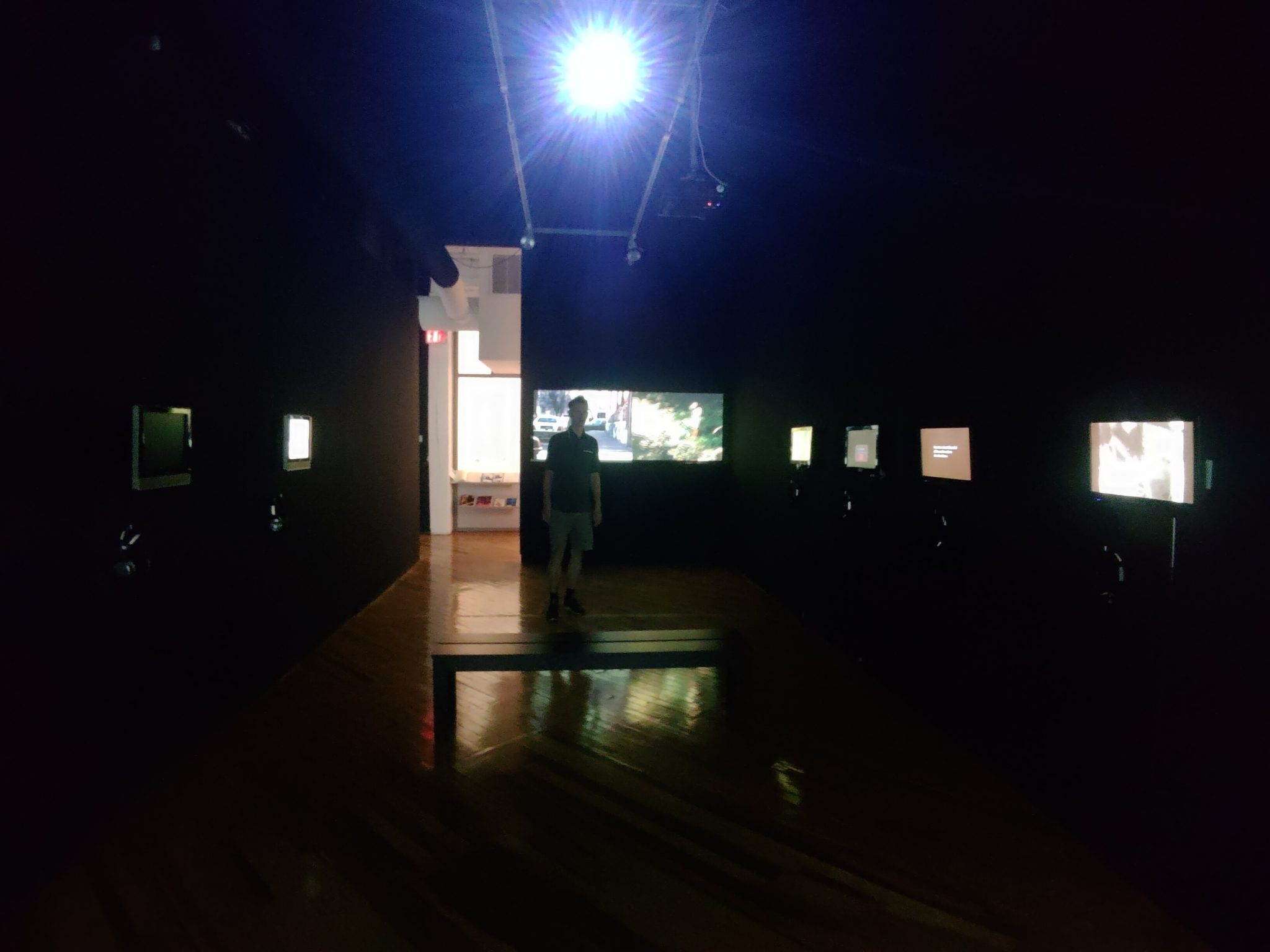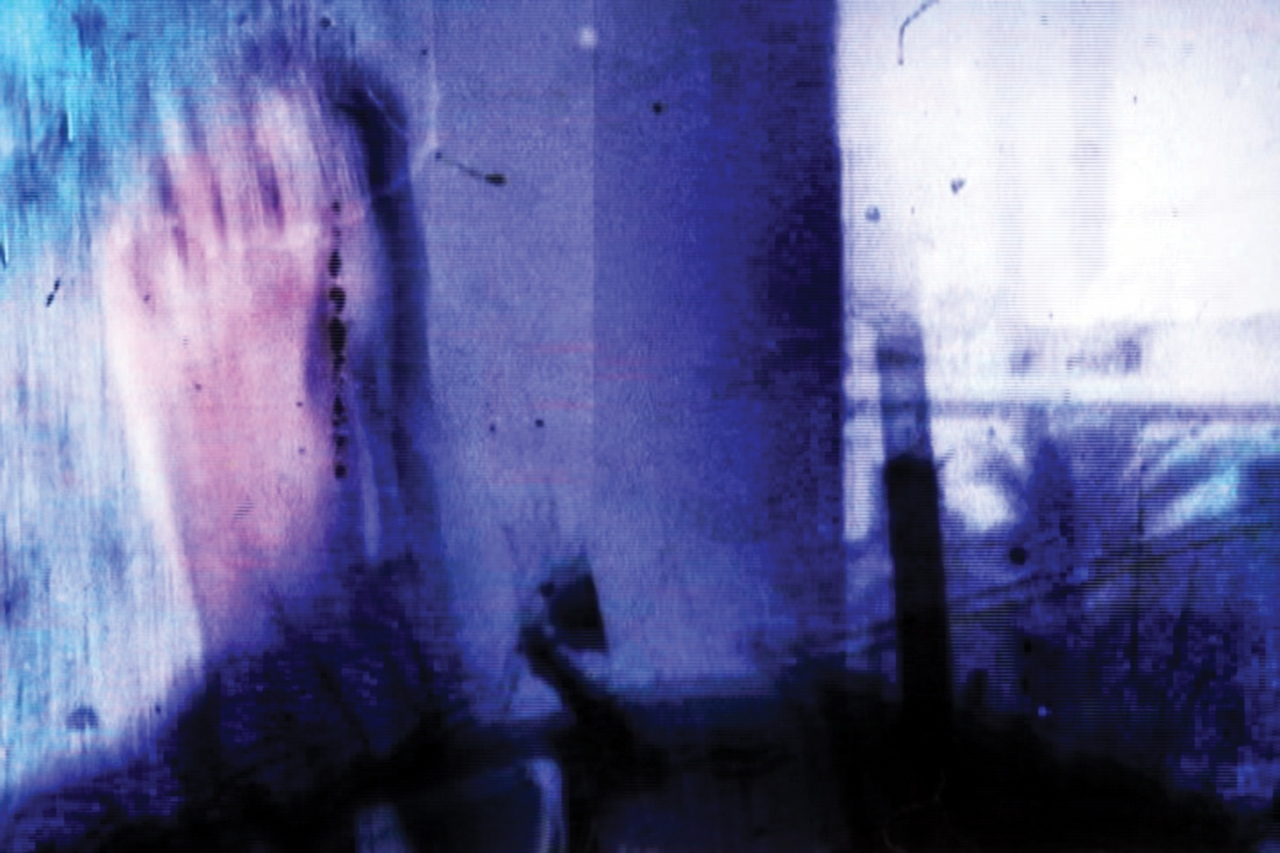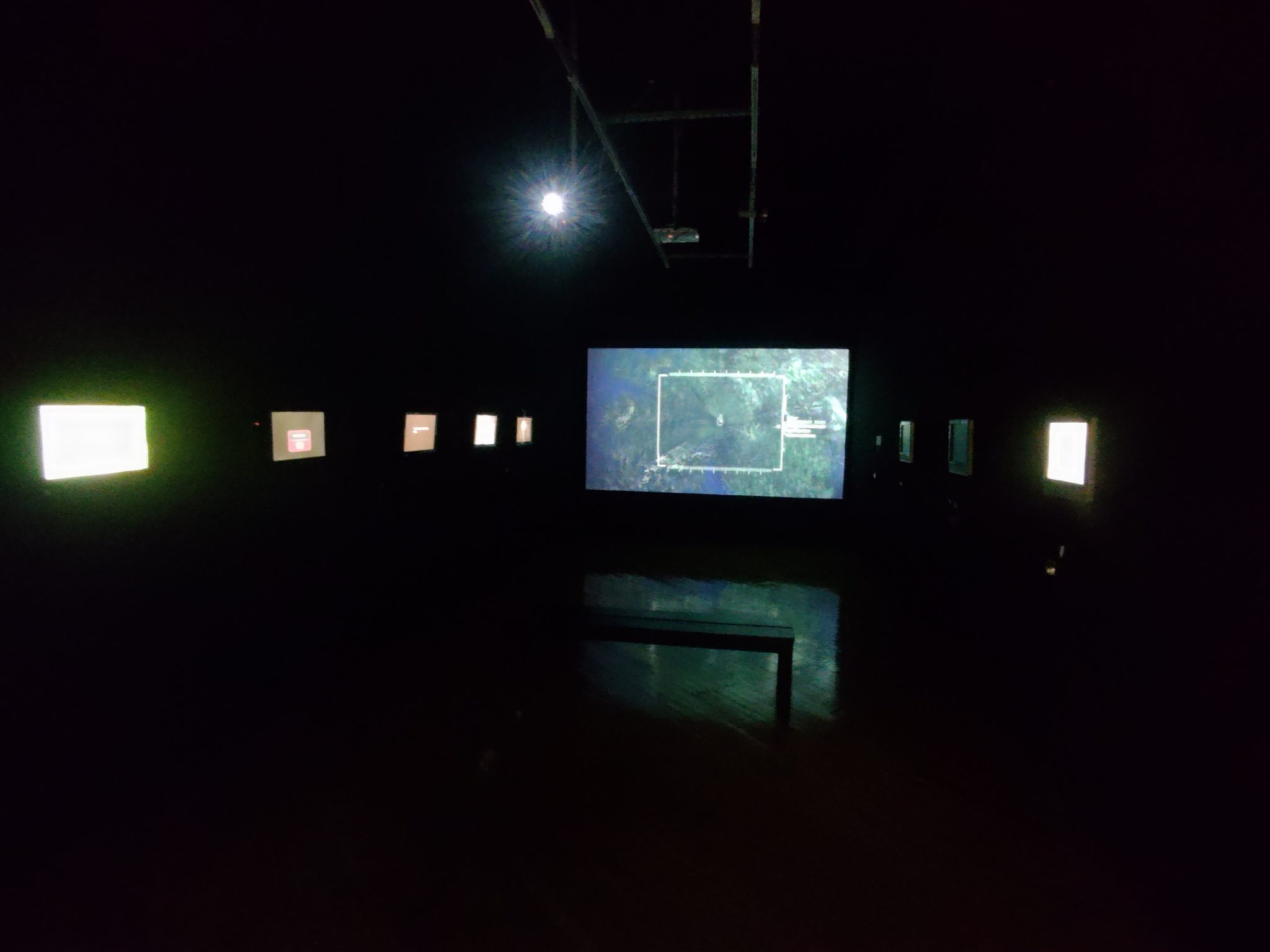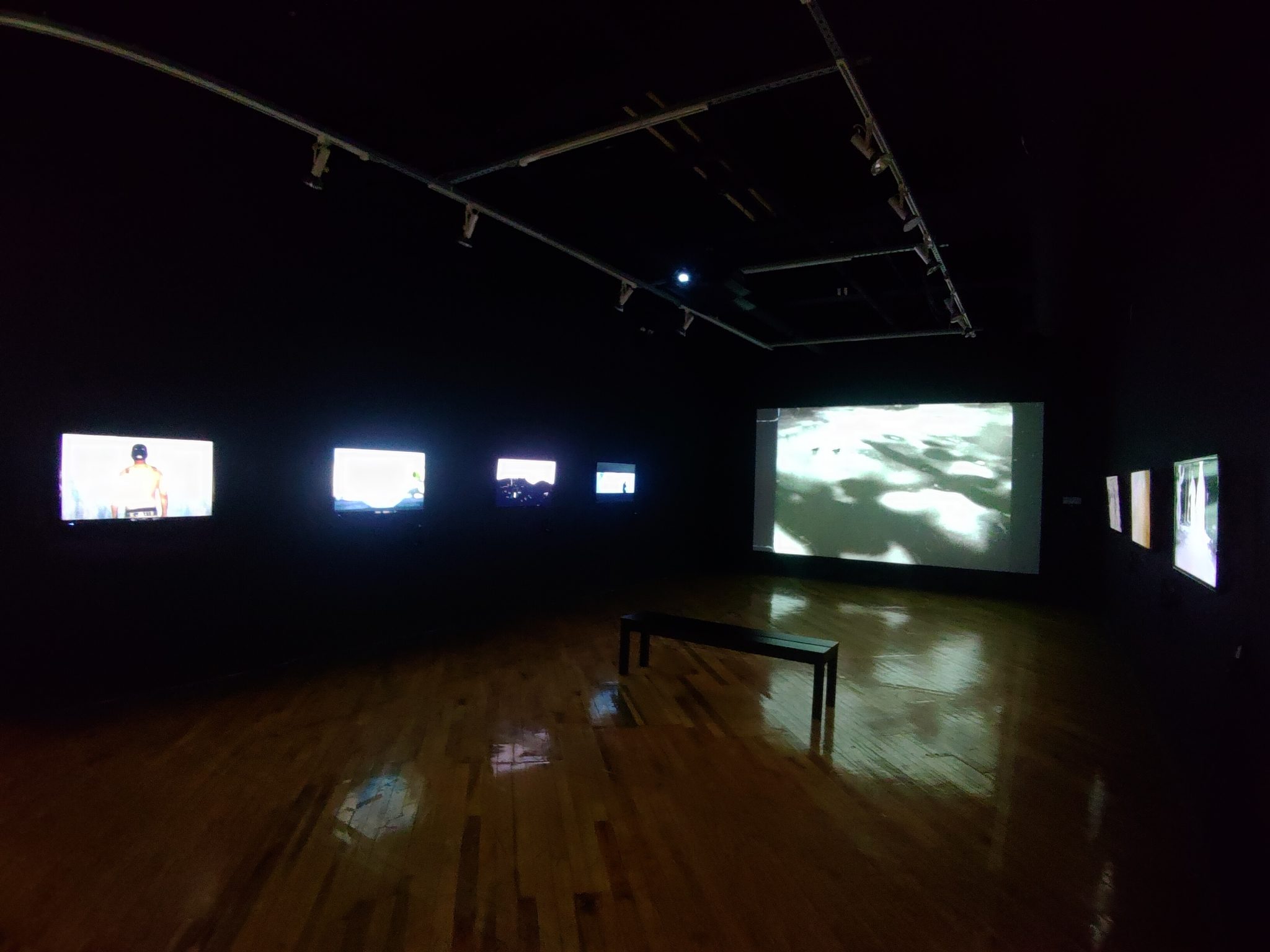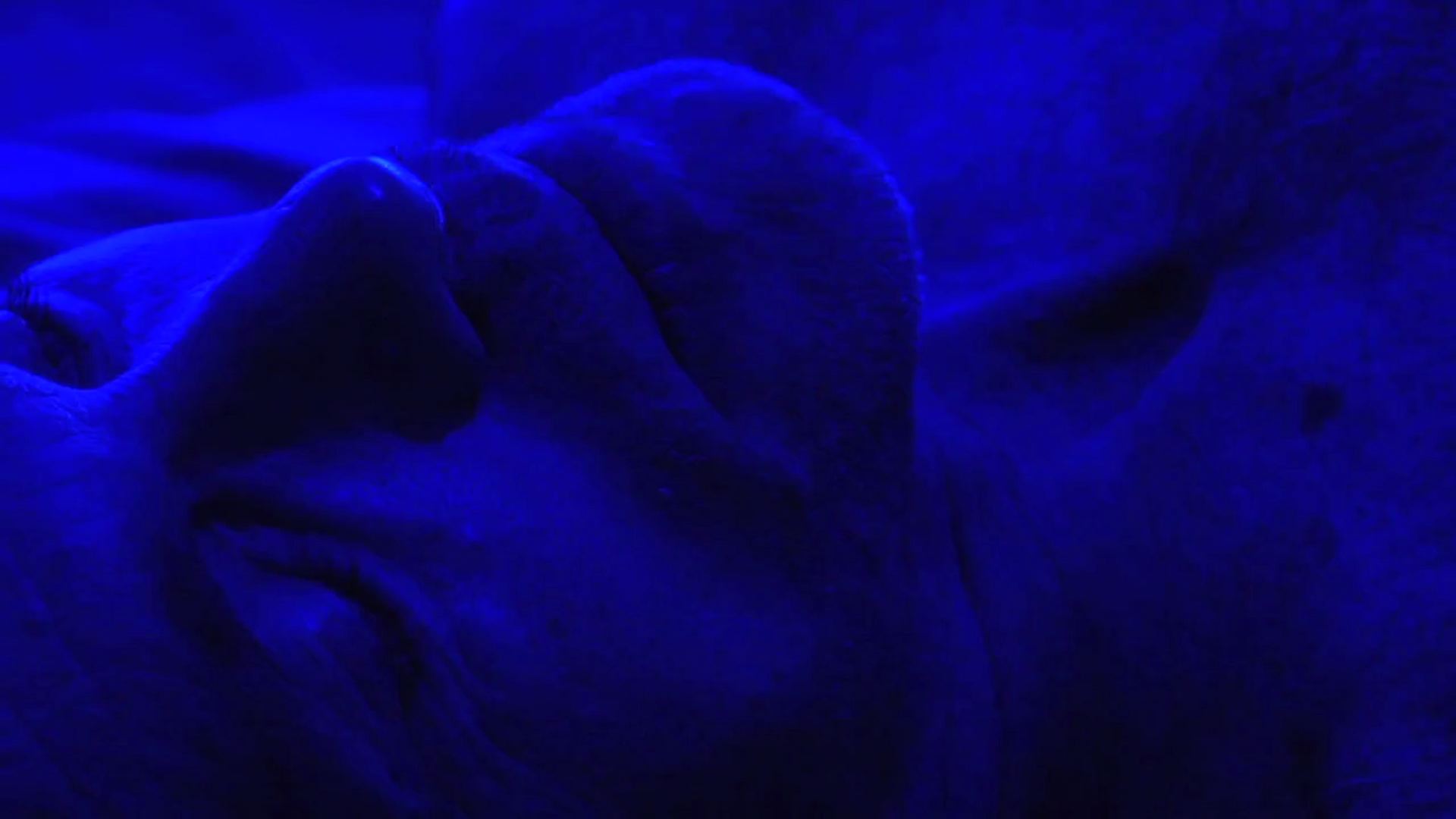 Mike Hoolboom, Jorge Lozano and Vicky Moufawad-Paul in conversation
Mike Hoolboom, Jorge Lozano and Vicky Moufawad-Paul in conversation
A Space Gallery, June 25, 2019
Vicky: First I’d like to acknowledge that we’re operating on the land of the Huron-Wendat, the Haudenosaunee and the Mississaugas of the New Credit. We honour the First Peoples. We are so grateful and mindful of the ways that we are here and look towards truth and reconciliation.
This exhibition Configurations is personally exciting because both of you have been influential for me as an artist and curator. When I arrived in Toronto Jorge was running the AluCine Film Festival and curated a gallery exhibition with Oscar Muñoz whose work I’m still inspired by. Mike, I read your Panic Bodies (1998) book recently and my first question is: why did you imagine yourself as a car?
Mike: My father was an engineer at a moment when science, even “social engineering” was going to save us all – a utopian hope that rebirthed with the internet and its ironically named “social” media. In the 60s my dad talked up computers, which at that time were being fed by shoeboxes filled with punch cards, though he assured me they would revolutionize education. And he was working on an electric car. We shared the feeling that machines were better than people.
Vicky: You both started out shooting film, and while you continue to work with emulsion, much of your work is digital. Can you talk about how technology changes have shifted your practice over the years?
Jorge: I started with the video Portapak. When I came to Canada I lived on Toronto Island where I met Jim Anderson, an artist who shot for Michael Snow. He brought a Portapak once and showed me how to use it and I was hooked, long before I ever thought of making art. I bought a still camera, and then after I saw people shooting super 8 I bought my own film camera. By the end of 1971 I made a movie that was lost, then I made another that was lost, and there’s about ten seconds of the next film in one of my videos that survives. They were fictions featuring all of my friends on the island. I said OK let’s make a film and they were all excited. Everyone got dressed up for a surreal adventure. Afterwards I used the super 8 camera to record my life.
When I was in Colombia I thought I knew everything, but when I came to Toronto in my twenties I had to reinvent myself. I became a kid again. I had to learn the language and rename experience. My whole life is renaming.
I made media because when I turned the TV on I didn’t see myself represented. I stopped watching TV and fiction films because I couldn’t see my problematics. So I began creating my own visibility, seeing myself seeing.
I went through all the formats – 3/4”, VHS, S-VHS, high 8, mini-dv, digital. I bought the first digital card available called Miró which cost $10000. Cantos (28 min 1998) took six months to make because I could only make one minute at a time, and rendering that minute took two days. If I made a mistake I would have to correct it and wait another two days. I didn’t sleep for months because I would have to wake up at different times to render. It was totally absorbing. I think it’s the first digital work made at home in Toronto.
I saw a lot of experimental work, but I was never committed to its formalist philosophy. I use a lot of experimental influences and mix them up, creating my own language out of that history. Many artists follow already established lines, they’re very puristic and the result is an absence of content. My work has always been political because I had to reinvent myself.
Mike: My parents were immigrants who carried their Second World War catastrophes with them to a place of safety and escape. But inside the frame of the family, which became the frame of my small world, the conditions of that war – the internment camps, the hunger and privations, the threat of violence – never ended. So while I was born in the model suburb of Don Mills (Toronto), and grew up in the rapidly converting farmland idyll of Burlington, I knew that everything was not as it appeared, that there was a double vision at work. My most important memories were not my own – hence perhaps my interest in found footage. I am also found footage.
The embodied sense of a troubled image creates an archaeology of seeing, where layers upon layers might lead us, as Vicky noted in her opening address, to the Indigenous roots of the room we’re in today. All this brought me eventually to artist’s movies. And the ghost that haunted these formal excursions was: who does not belong here? How might the frame, the practice, the embrace, expand to include the voices of the ones who do not belong? How can we change what it means to belong? I think a lot of the work in the exhibition is aimed in this direction.
I began making films with my father’s super 8 camera. In the 1960s there lived a dream of shrinking industrial technologies, the wonders of science, and bringing them into the home, to turn the home into a factory. The home darkroom, the home movie theatre; the super 8 camera was part of that. In place of stars: the kids. And in place of sets: the vacation. We would relearn how to see and interact with each other – social engineering. This dream has been more fully realized with the home computer of course.
My film school was the Funnel, a member-run movie theatre/production/distribution joint housed in a derelict east end warehouse. Strangely or not, many of the faithful lived just a few blocks away, myself included. In the 1980s, in order to make or exhibit media, you had to come together to share space and gear. I didn’t understand most of what was shown there, and social anxieties limited my conversational attempts, but I had a great appetite for what I couldn’t make sense of. Artists came from all over the world, cooking up scents to accompany their movies, mixing medias and projections, and in that pre-internet, pre-video preview era, most of the work was programmed sight unseen. There were 40-50 screenings per year, so there was a sense of process and invention, we were part of a living essay, in the French sense of making attempts.
No one owned a TV or a car, our clothes were second hand, we lived in industrial buildings without heat and bathrooms waited down the hall. You could pay rent by holding down a job for a couple of nights a week. We were rich in time, and while it was unspoken, it was understood that we were part of an anti-capitalist project. The hope was not to have a better job, the hope was to work as little as possible, except as volunteers, where the effort was maximal. From punk we learned DIY and to hang a question mark on anything official. Credentials and professionalism were suspect. And of course the central question for media arts in Toronto during the 1980s was the Censor Board, which was busy expanding its reach. Exhibitions, and hence production, needed to be tightly monitored and controlled. The state as parent. We were, by contrast, parentless creatures.
It’s difficult today for me to absorb the formalist work that Jorge mentioned. It lacks the counter-cultural frames that we lived in, so it feels like genre additions, the work of good children. The deeper question perhaps is how to sustain a political practice in this digital moment of too muchness, when the old contra structures have faded or collapsed. Or as Jorge has put it to me more than once: the question is not how to make political work but how to make work politically?
Jorge: I remember the first performance I saw using a Portapak. The artist placed the camera behind his head while a TV played the image in front of him. Then he began cutting his hair. It was a real time digital mirror. The Portapak became a political tool as artists went to meetings, recorded them and sent them out.
Mike: Real time escaped the pressure of entertainment and utility. Having a telephone today is like being at a party with the most interesting people in the world, you keep looking over the shoulder of the one you’re talking to because there’s a crowd scene of perfect fascinations. Real time has reappeared as livestream, but in that pre-internet moment, real time created fantastical possibilities. First we would cut our own hair, and then we would cut our own lives.
Jorge: When we shot film it would go to a lab for a few days, and when the footage returned it was often completely different than what I imagined. You never got what you shot. You could never plan the overexposures, these yellow streaks, the light touching the emulsion. Mistakes and randomness became a new language. Similarly, in video the Portapak produced so many glitches in the image, while the sound was muffled, and these new kinds of machine beauty were taken up by artists and turned into virtues. The most important thing was going into the unknown, the uncomputable. We constructed our work from the unexpected. Artists are keepers of the unexpected.
A lot of work is unplanned, a situation calls me to shoot, and then the footage is brought home and the movie develops on its own. I don’t understand what I’m doing. As our relationship develops, new dialogues emerge, so I add texts. I relate with it.
Mike: Our practice is like digestion. We have a conversation, we read a book, or read a friend, and then we need to digest these words and faces, and the way we digest it is by making a movie. It’s a way of listening to and reflecting on what is around us. And because our conversations don’t stop, our work is daily and ongoing. Many artists binge, they are inspired by deadlines or exhibitions, but I think we’re more steady state.
Jorge: I’m interested in the open possibilities of making, not being married to one approach. How to invent freedom? Freedom doesn’t exist so you have to invent it. Our works are tools to create freedoms.
Vicky: In the early days the machines were so heavy. Before I studied film and video they used to get women to lift weights so that we could carry the equipment. Today the images look almost too clear and clean, but in your work you leave space for what is unknown.
Mike: Digital artifacts carry a promise that every moment of the image should be legible and understood. It’s the utopia of the surveillance state. I shot a lot of Where the Night is Going through Saran Wrap, without it, the scenes look like pictures I can’t see. Now you see less, but these omissions create room for viewers to step in.
Rebecca Garrett: Your talk reproduces these conditions. We’re in a gallery so I don’t know whether to pay attention to your face or the images behind or beside you. We have to make choices.
Jorge: You can see exactly what we can’t see. And because we’re facing you, we can see the images behind you. We can see only what you can’t see.
Mike: That’s why we need each other. To see another side.
Vicky: Pamela Matharu had a piece in the show before yours that included the phrase “the world crashes into my living room every night.” Found footage used to mean taking from Hollywood, they have the rich image while we have the poor image. Using those images was a form of resistance. But now found footage artists use shots from other artists or people attending a protest in Nigeria who are not part of the establishment you want to take down.
Mike: The internet has ushered in a new cultural centre, which we call the archive. It’s so central that no one can leave home without it. It lives in our phones with their endless library administrations and self-surveillances – our address book, our pictures, our emails and texts. All dated, metatagged and archived. What could we say about a culture that has been remade with the archive at its centre? Perhaps there is a fundamental anxiety about losing everything. What is it that we are so afraid of losing?
We live in a disappearing culture. But today we can contribute to a digital commons. Digital culture is meant to be copied, on every Vimeo page there’s a handy download button if the artist opts for that, and this artist opts for that. I’m part of a circulation of pictures. It also has to do with authority, authorship, ownership. For the past five years I’ve gone back and relooked at everything I’ve made and either remade it or thrown it away. Every version that exists is a temporary arrangement. If this work is useful, others will download snippets and reuse them in their own way.
Jorge: Archives are important for me not so much for what they contain, but what is omitted. The omission is also archived. As an immigrant, I have always dealt with invisibility. I know the invisible histories in Colombia, but also in New York in the 1960s. The name of Andy Warhol has survived, but there were Puerto Ricans who worked with Warhol and made brilliant movies only you never hear about them. And Puerto Rican performance artists who are not written about hence not remembered, conceptual artists who were Latinx whose work remains important but they’re not in the history books.
Alexandra Gelis: Vicky it’s great that you asked about found footage because I would never think of Jorge as a found footage artist. But Jorge, you treat your own shooting as found footage. You have so much super 8 and video, I feel like you go back to that media as found footage and I suffer when you take the original super 8 and begin to cut it, no wait, but you cut and tape it together and then it becomes found footage.
Whenever you work with found footage you transform the image until it looks like you shot it. You really transform it. When Jorge is shooting he works super fast, he has a special way of capturing the moment. When you have the camera in your hand, it feels like the images are already there.
Vicky: Alexandra you often work together with Jorge, but your own movies proceed at a different speed.
Alexandra: I work super slow, research processes take three or six years. In our collaborations I’m normally the one behind the camera, shooting slowly while Jorge says no no no and shoots quickly. Then he takes all the material and transforms it bang bang there’s magic in two days.
Vicky: I wonder if it’s gendered. Can you trust your intuition? My partner is a writer and I can’t read as fast as he writes. I wonder if males trust themselves more, whereas a woman can keep editing and considering.
Rebecca: It’s not just about trusting ourselves, but language itself.
Jorge: Notes from Below (27 minutes 2019 was shot on 16mm. Alexandra Gelis and I processed the footage in a bucket, we didn’t know how to do it properly, so we did it improperly. This created a dialogue with materials, which are events, material events. The scratches become part of the philosophical rationale, there’s no separation between the image and what we are talking about.
Mike: The hand-processing is a gesture of domestic labour, we also see you and Alexandra looking after your plants, your grandchild Aluna and each other. The new relationships, the ethics and equity that the movie calls for, begins here, in these scenes of domestic labour. But then, astonishingly, you extend these relations and bring us to a 2018 strike at York University that you were part of, protesting for better wages for sessional teachers. You point out that there is a hard division between the organizers of the union and the workers, and that there is little address of the system itself, and its fundamental exclusions. This hand-made movie shuttles between these two kinds of labour, these two models/images of equity and inclusion.
Jorge: It’s about the labour of being an immigrant and that is always a struggle. You don’t know who you are because you’ve left home, and this new place is never going to be your country. And the country you left becomes less and less your country. You become a different being that is always in the making. If you’re aware of that, you’re in a political situation because you always have to struggle against being assimilated, allowing yourself to service the dominant culture. I see myself as a new kind of Canadian. I see immigrants as another Canada that has been forming for a long time, representing multiple ways of being. As an unfinished person I never know who I am.
Mikel Guillen: Albert Camus said that foreigners are where the real art resides. But we’re not only immigrants, we’re creating a universe. That’s why we call it a struggle. But at same time it’s a struggle to create.
Jorge: How to keep the counterculture alive? The tendency is to be absorbed by a system, it’s a trap we all fall into. How can you maintain yourself as a nomad? We are all capitalism. How much am I what I am questioning? Racism is unacceptable ignorance but the way that we see other people is filled with stereotypes. As a Colombian, I am constantly educating people of all colours that to be a Colombian is a richly complex experience. We are not animations about Mexicans created in racist Hollywood or Mafiosos. Remember that the first cocaine cartel was Coca Cola and that the Mafia remains a big industry in the USA, the Cosa Nostra is part of their imaginary.
How much are we what we question? I use that phrase to keep myself remembering that the counter has to be found within myself. Spinoza spoke of the joyful affirmation of oneself. I don’t make work to suffer, I enjoy everything I do, however painful the issues are. My main function as a person and as an artist is to enjoy life. If you don’t enjoy, you’re serving the system. Happiness is political.
